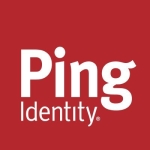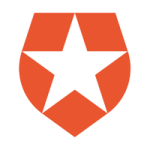Customer was looking for initially an automated self user registration through a secure channel. Apparently it looks like a very easy going requirements but if you look in the detail they want to authenticate before registration process. A user came to create an Identity and customer wants to authenticate and securly takes the same data.
Another issue was localization and reporting
If I describe what actually happened, a little bit of the business case, that will help you to understand what it was like. The customer is the kind of customer that really doesn't want to share anything. When a person joins that organization, he has to pass through a couple of security levels, the scrutiny, before the ID is given to him. They used to use a manual process. Whenever a person joined the organization, they used to take his details; they used to write on a piece of paper; then this paper used to go to one of the departments; then it goes to another department; and so on. It wasn’t just a matter of going from one building to another; it was going from region to region.
Finally, this paper goes through a couple of scrutiny procedures. Then, it used to come back to the IT department, and finally, they do their security check and they create the ID and give it to them in an envelope. That was a kind of long procedure that sometimes took 2-4 months to create the ID; just an ID for a person. It was a challenge for the customer for the last 20 years.
We were doing that project and during that project, we found that the project owner wasn’t trusted. The project sponsor wasn’t trusted to just change this overall but they had this security constraint. What they actually wanted was that when they create the ID, they want this person to be authenticated. Generally, this is not the case in any organization, that somebody joins an office and he doesn't have any ID. So, how are you going to authenticate it?
What happened was that what we've been told, “Will you guys do this? Authenticate through a national database? We want, when a person is going to join us and he will request an ID, he should be authenticated through a biometric and that fingerprint will take him to the national database, where he will check in and it will come back to their IDP, their identity provider. They have it internally, and then, we will pass it through our system.”
Now, this was a challenge because in CA Identity Management, when you have a self-user registration page, this page was open so anybody could go and open it. We needed to protect that page, and on top of that, this information had to be protected to a third party. What we did is, we brought a couple of products in the middle of it: CA Federation, CA Single Sign-On, and CA Identity Management.
What happened when the user got authenticated with his fingerprint, it comes to the IDP, we have federation through CA Federation and then, once it passes through it, we have CA SSO, which is protecting the identity management page. Once it gets past this information, it comes to the self-user registration page, but here's another challenge: You've been authenticated but now you have a page which is open. I can authenticate myself and put someone else through the system. That could be a possibility, so we had a problem.
What we did is, we just pulled the data out from the third-party, national database and brought them to the CA identity page, to the self-user registration page, and all his names, IDs, and phone numbers, come in automatically. Then, it goes through several approval processes. Finally, the ID is transmitted over his mobile number that is in the national database.
That kind of work we have done. There are other challenges, as well.
The most valuable feature is that it meets the requirements of the customer. You have a lot of features in the product. Every product has them, but the question is, are these products going to meet the requirement of the customer? Because, if you meet the requirements of the customer, then it's way too easy to get inside the customer. We met the requirements of the customer and that's why I believe that this product has value.
I think the future release is, if you ask me, I think they have done a lot in the new release, especially the front end. The front end was not as good. CA did a good job in doing it, especially when I look at the new identity suite. They have done a good job in changing the overall look and feel. This is actually what the customer was looking for. The look and feel was not good in the earlier product. It's a journey, so we just completed one of the requirements for the customer.
CA has reporting at the moment. With the reporting, every particular segmented product has a reporting engine. I would like to see centralized reporting for all of them together. If an enterprise customer has all of these three or four modules for security, he will get consolidated reporting.
A problem we had with the customer was, at the moment, we were asked, “Are you able to integrate these products together?” Were we able to get the requirement done for the customer, as a business requirement? The reporting side we were unable to do it out-of-the-box. If CA consolidates the reporting for all three together, it may be easier. I'm not sure, but it may be easier.
More than five years.
We are changing the architecture to scale it.
It's one of most complex requirements as explained earlier.
CA Partner implemented it
CA solutions.. Are generally expensive but for the customer the ROI is big.
When you are looking for a security solution, products are there in the market, but you really don't want to go for a product that looks very beautiful from the front but has very bad stuff in the back end. One good thing is that CA has, I believe, that is has an edge. It allows me do a lot of what the customer is looking for, beyond the customer; beyond the product boundaries. They are certain things that we would not be able to do if this CA solution didn’t have this flexibility, and it's highly secure. It is a highly reliable solution to work with.
We implemented the solution almost a year and a half ago and up until now, there has been no downtime. It is reliable; it is good; it is open for customization; it is open for integration.
From my experience working with CA for almost 13 years, it’s a company. I'm not saying it’s specific to a solution. I'm talking about CA in general. It's a company with a solution and the company with the right solutions.
I have explained the journey of how these solutions (not specifically CA SSO only, but their entire security suite, including Federated Identity Management) met the requirements:
- The customer was looking to have a self registration and password reset portal for their organization but they don't want to leave this portal open and accessible to everyone without been authenticated. This was only challenge, which I have mentioned it.
- Second solution, open for customization for security from different datasources.
- Thirdly, localization of this solution. Eventually, if these solutions have only listed features and it works only what they present. For sure, we wouldn't be able to achieve it.
There are critics and these critics help CA to build their good solutions.
Extraordinary product; extraordinary flexibility to explore and meet the requirements of the customer.














